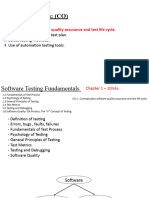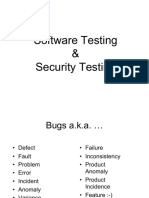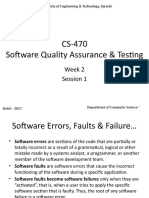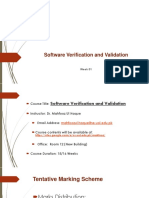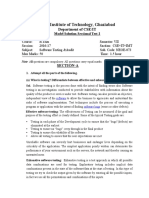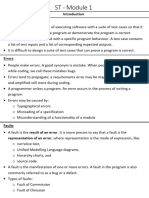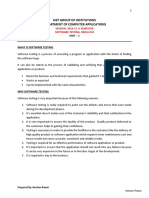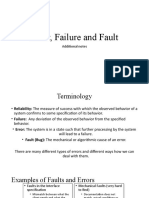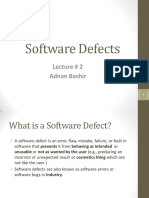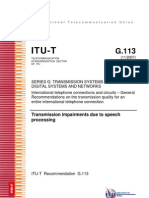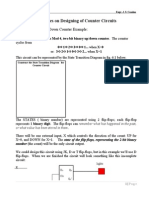0% found this document useful (0 votes)
119 views12 pagesUnderstanding Software Errors and Bugs
The document discusses software faults, errors, and failures, defining each term and providing examples. It also covers topics like the relative costs of fixing bugs found at different stages of development, how most bugs originate from issues with specifications and design rather than code, and whether truly bug-free software is attainable.
Uploaded by
salikCopyright
© © All Rights Reserved
We take content rights seriously. If you suspect this is your content, claim it here.
Available Formats
Download as PDF, TXT or read online on Scribd
0% found this document useful (0 votes)
119 views12 pagesUnderstanding Software Errors and Bugs
The document discusses software faults, errors, and failures, defining each term and providing examples. It also covers topics like the relative costs of fixing bugs found at different stages of development, how most bugs originate from issues with specifications and design rather than code, and whether truly bug-free software is attainable.
Uploaded by
salikCopyright
© © All Rights Reserved
We take content rights seriously. If you suspect this is your content, claim it here.
Available Formats
Download as PDF, TXT or read online on Scribd
/ 12
